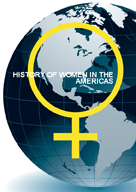Contrasting Trends in Women’s Employment in the Twentieth Century: Race, Gender, Class and The Feminine Mystique
DOI:
https://doi.org/10.14296/hwa.v3i0.2191Abstract
In The Feminine Mystique (1963), Betty Friedan highlighted the anomie experienced by women whose sole focus was their husbands, children and homes. She also presented a solution to this ‘problem that has no name’, arguing that women’s lives could be more fulfilling if they combined marriage and motherhood with paid employment, and more particularly with a professional occupation. Using evidence from the U.S. Census, this article demonstrates that apart from the white upper- and upper-middle-class women upon whom Friedan concentrated, rising numbers of American women from all backgrounds already undertook paid work by 1960. As well as examining long terms trends in women’s employment in the U.S., the article disaggregates the overall figures by key variables such as age, race, marital status and age of children. By doing so, it reveals that the pattern of economic activity among elite white women, the cohort Friedan focused upon, changed in the twenty years following The Feminine Mystique’s publication, coming to more closely resemble that of working-class and non-white women. Furthermore, as the century progressed, professional and white collar employment increasingly became the norm. This seemingly vanquished ‘the problem that has no name’ although not the obstacles and difficulties that continue to face all women in the labour force.
Downloads
Issue
Section
License
Authors who publish with this journal agree to the following terms:- Authors retain copyright and grant the journal right of first publication with the work simultaneously licensed under a Creative Commons Attribution License that allows others to share the work with an acknowledgement of the work's authorship and initial publication in this journal.
- Authors are able to enter into separate, additional contractual arrangements for the non-exclusive distribution of the journal's published version of the work (e.g., post it to an institutional repository or publish it in a book), with an acknowledgement of its initial publication in this journal.
- Authors are permitted and encouraged to post their work online (e.g., in institutional repositories or on their website) prior to and during the submission process, as it can lead to productive exchanges, as well as earlier and greater citation of published work (See The Effect of Open Access).
Please note that there are no author fees for publishing in this journal.



